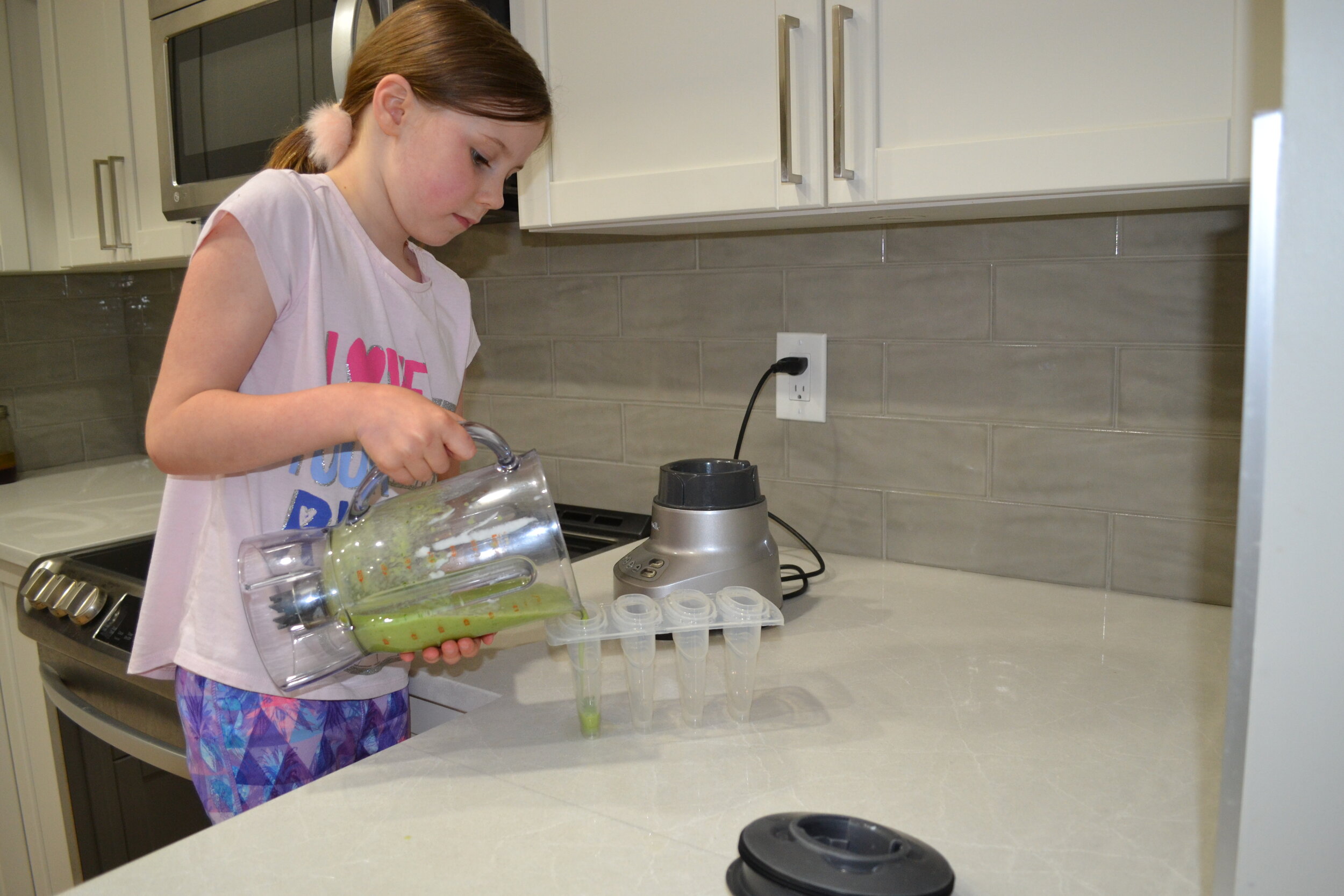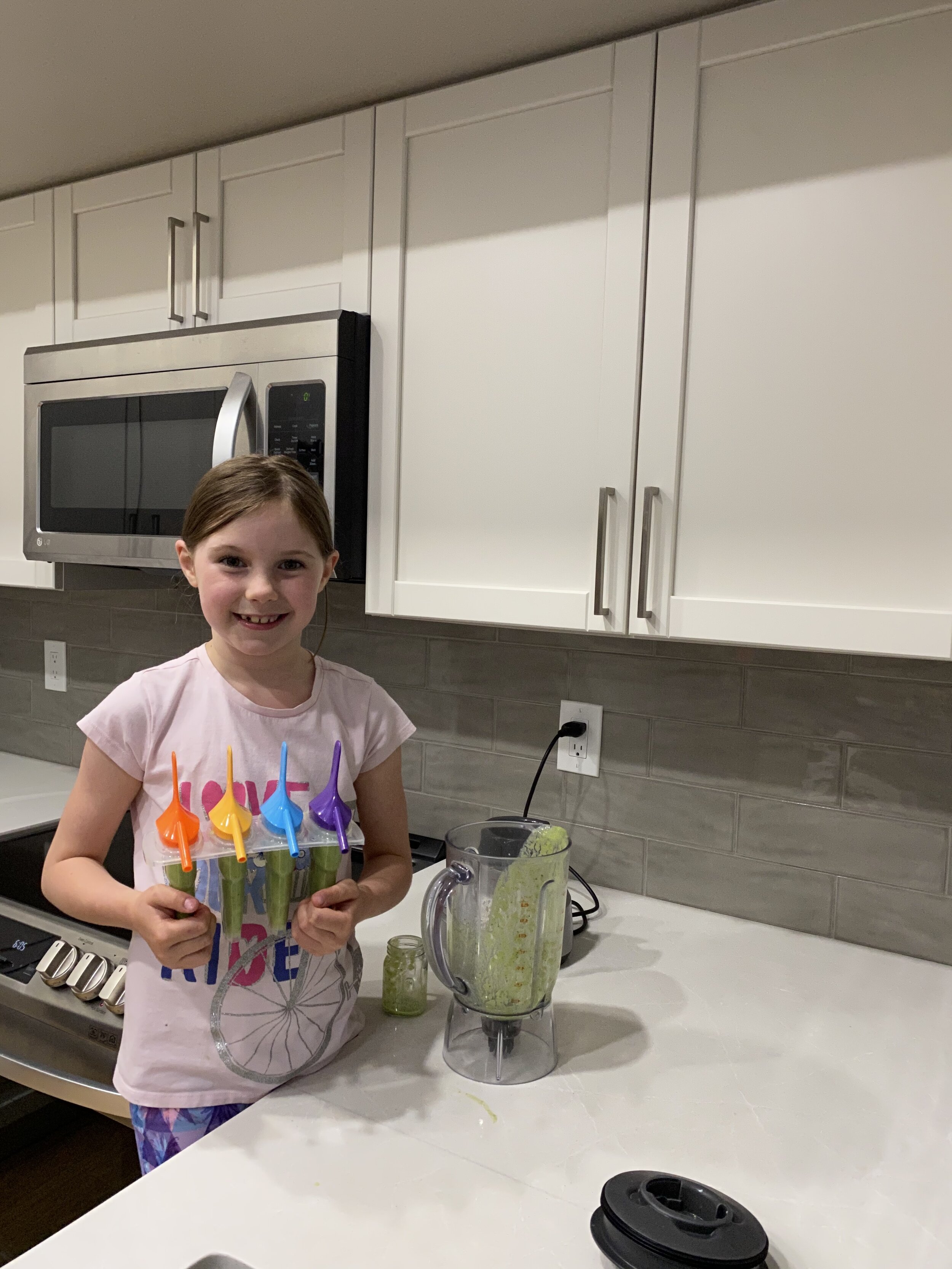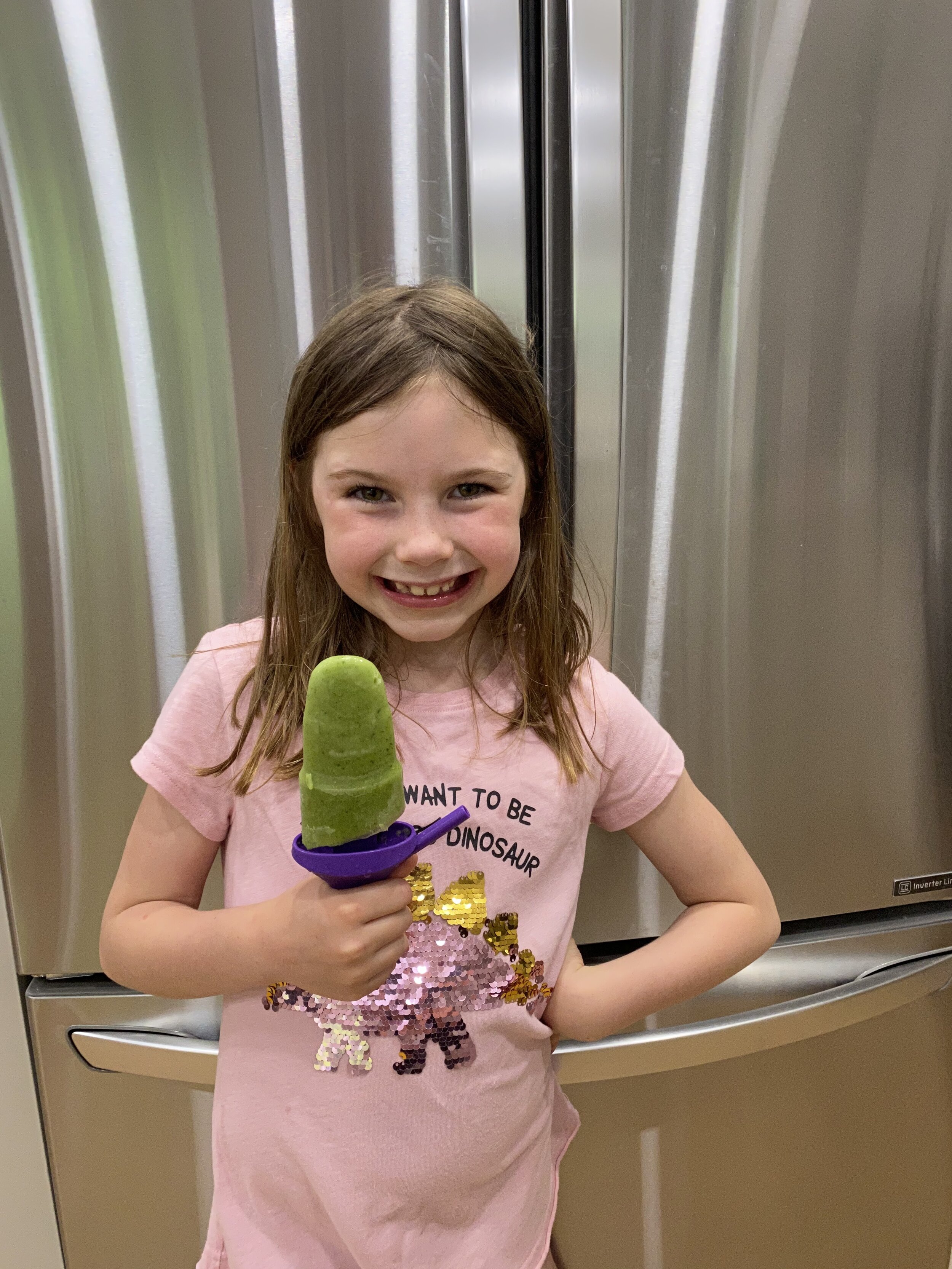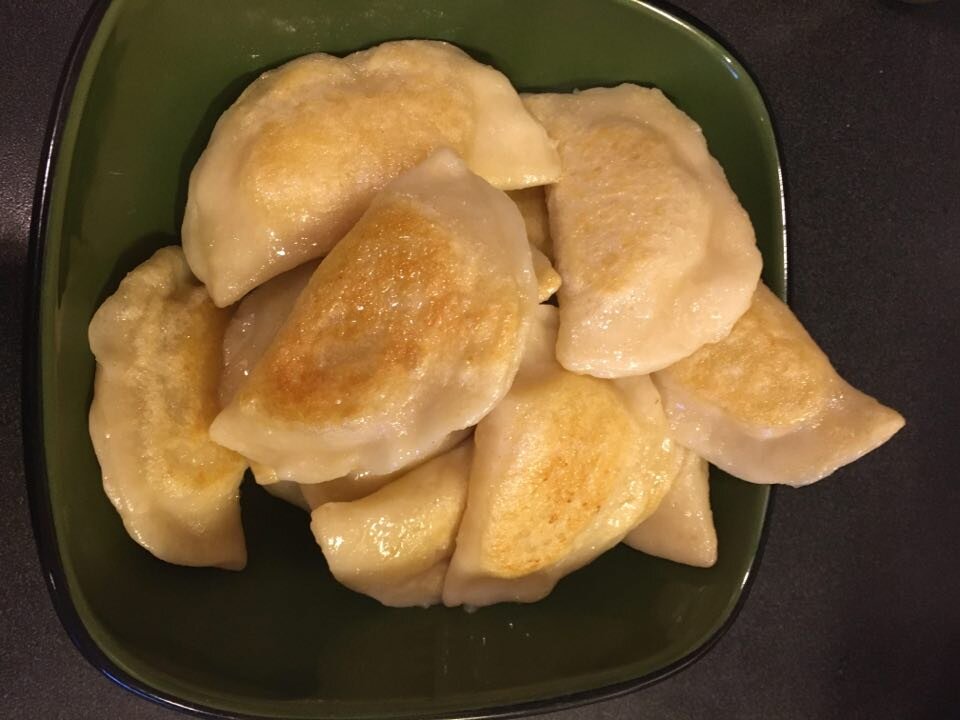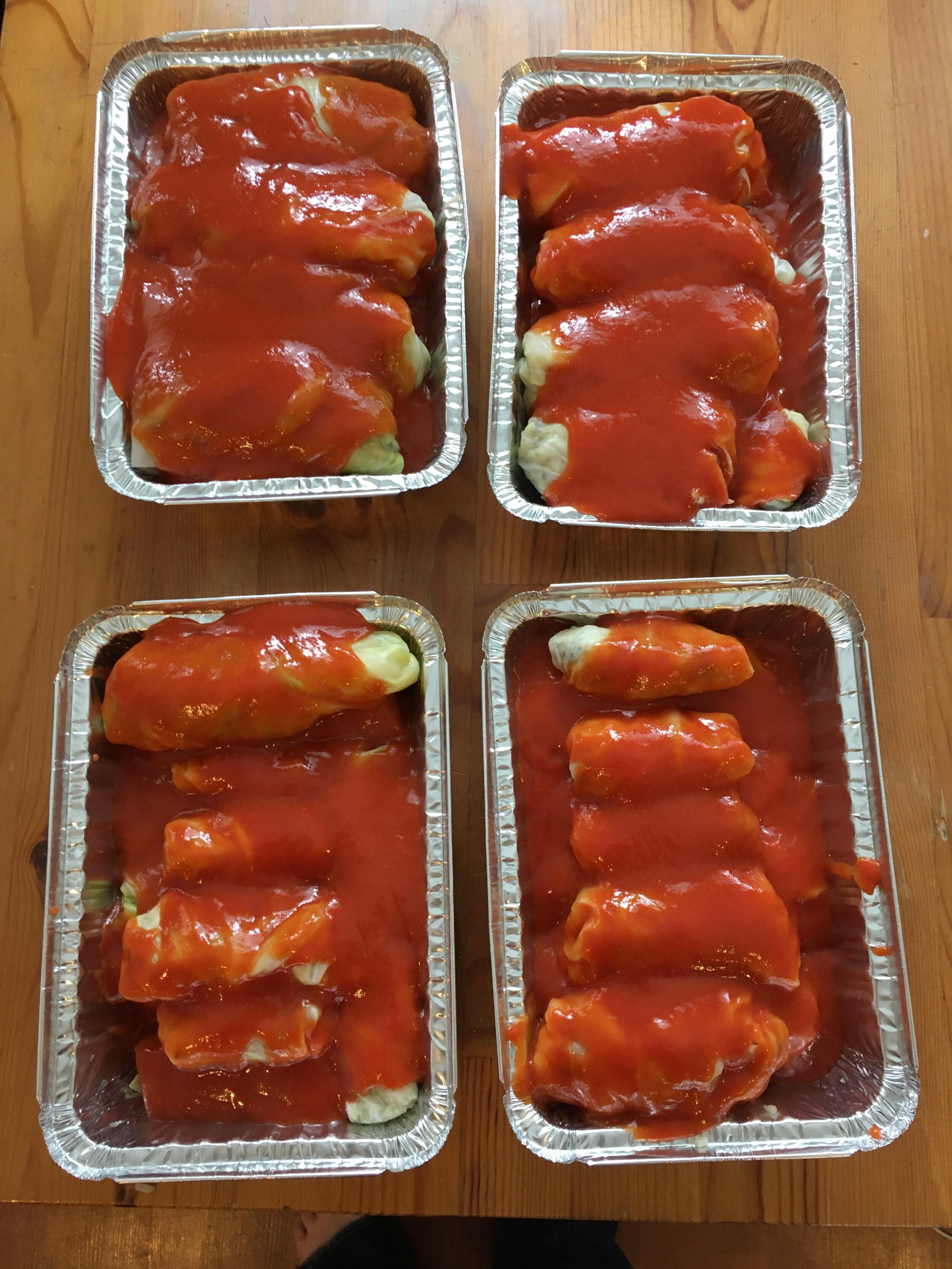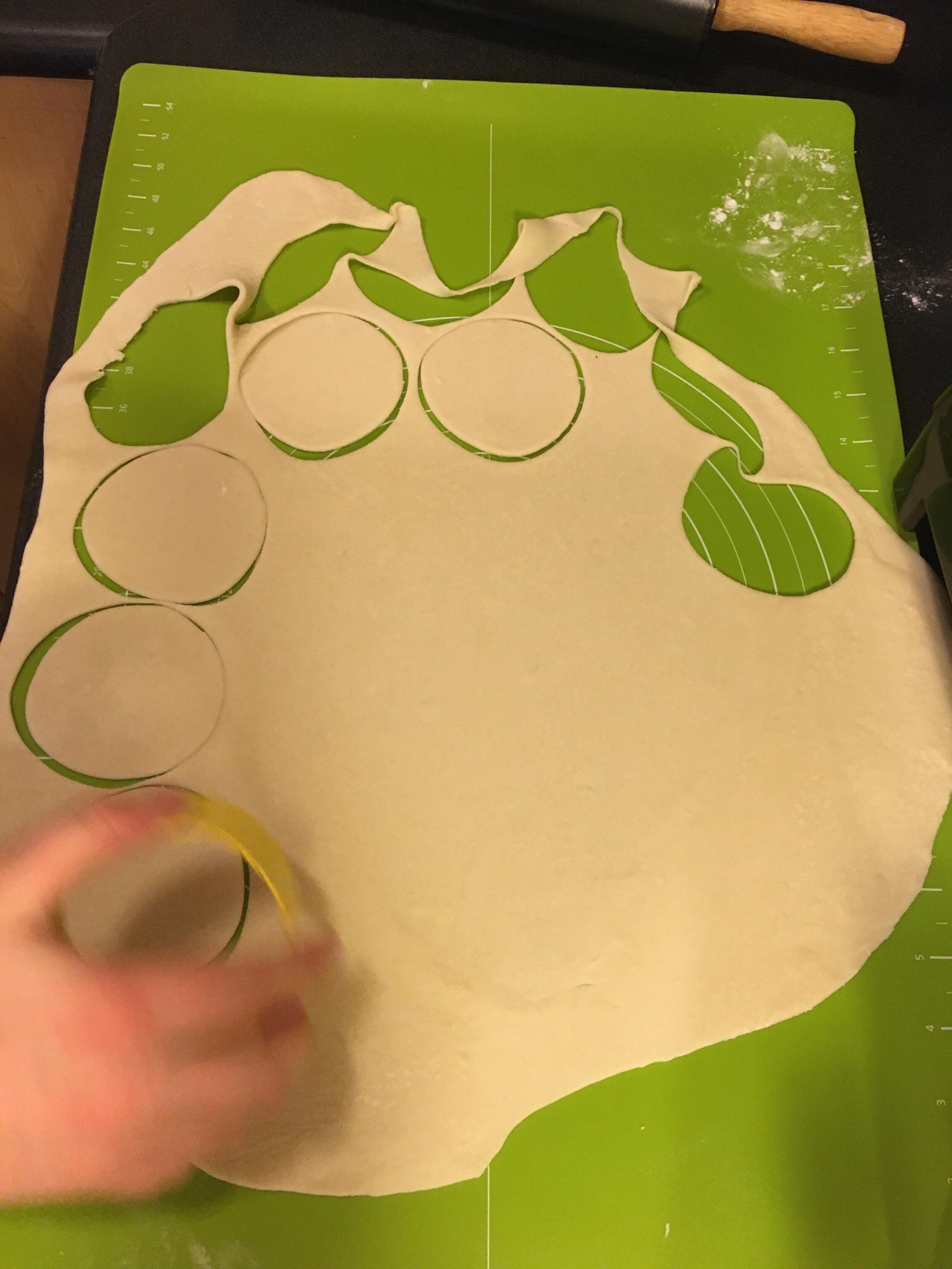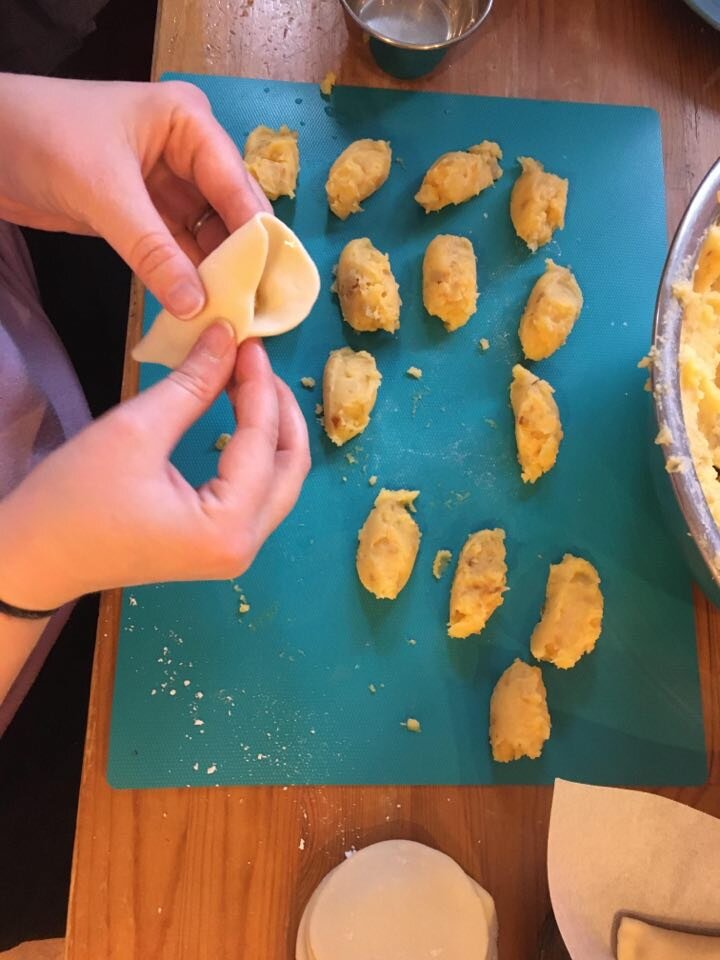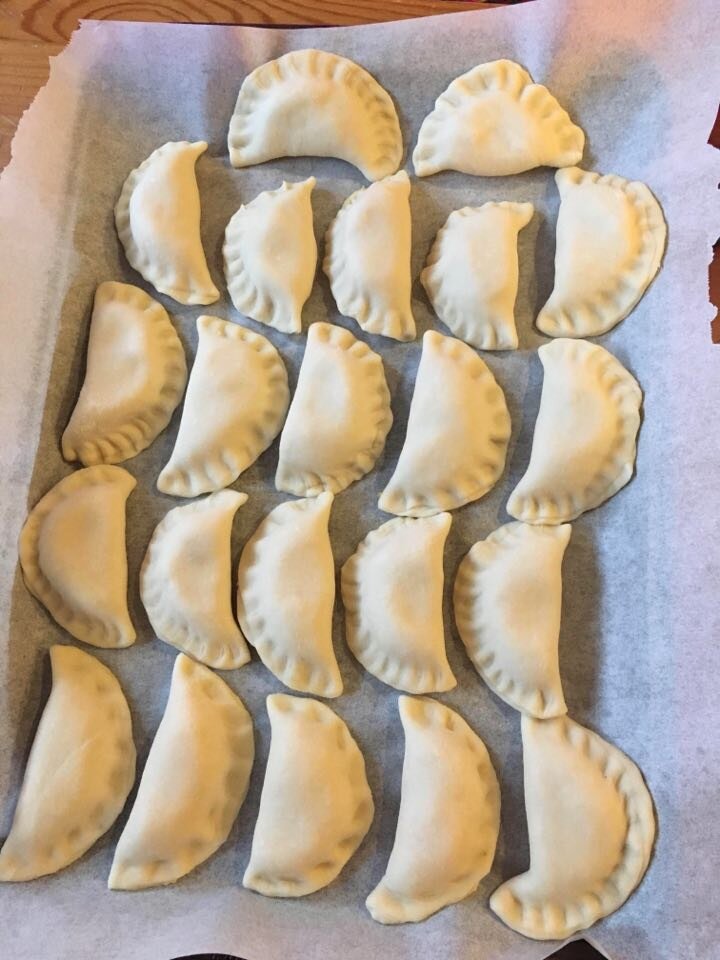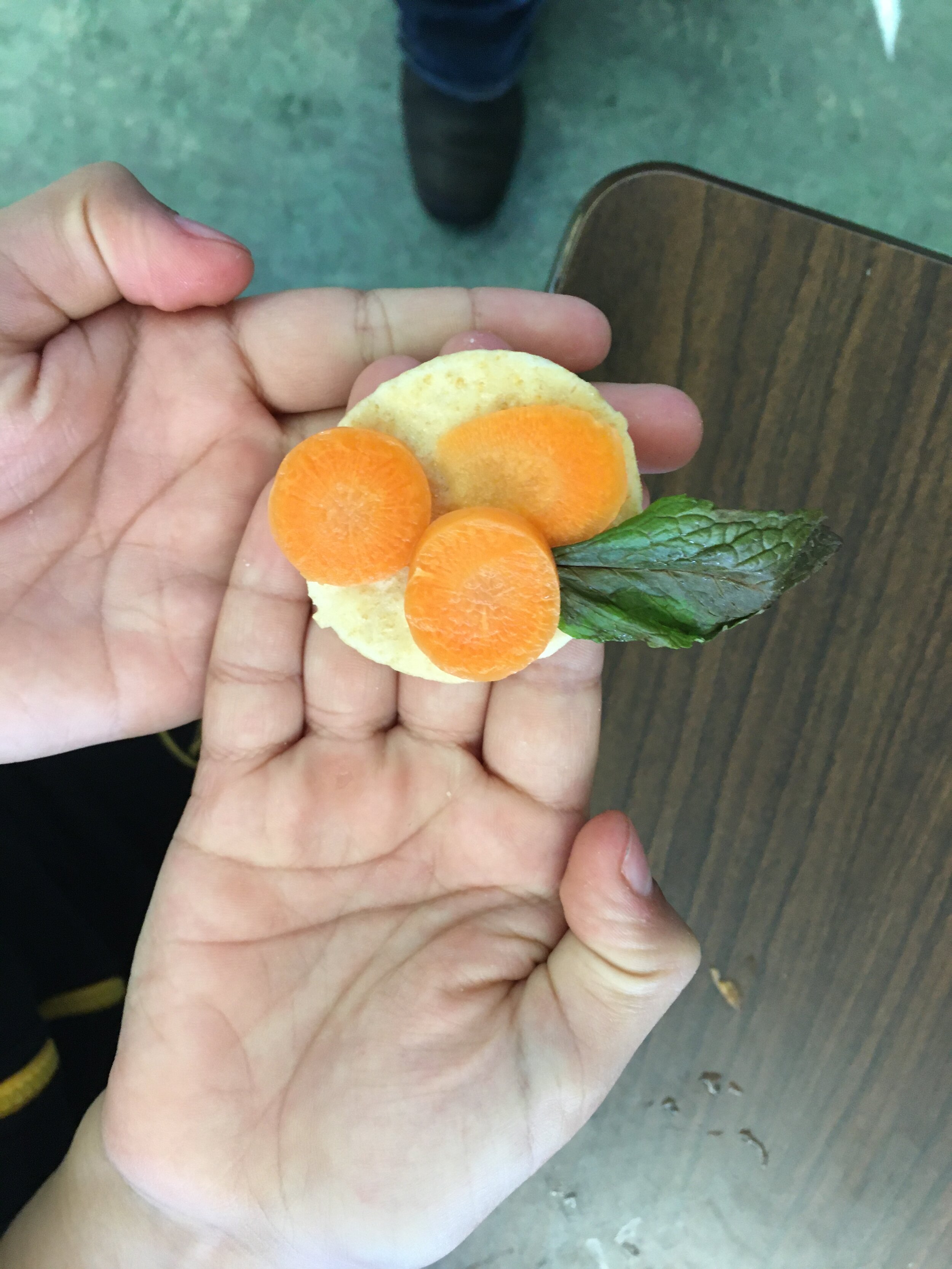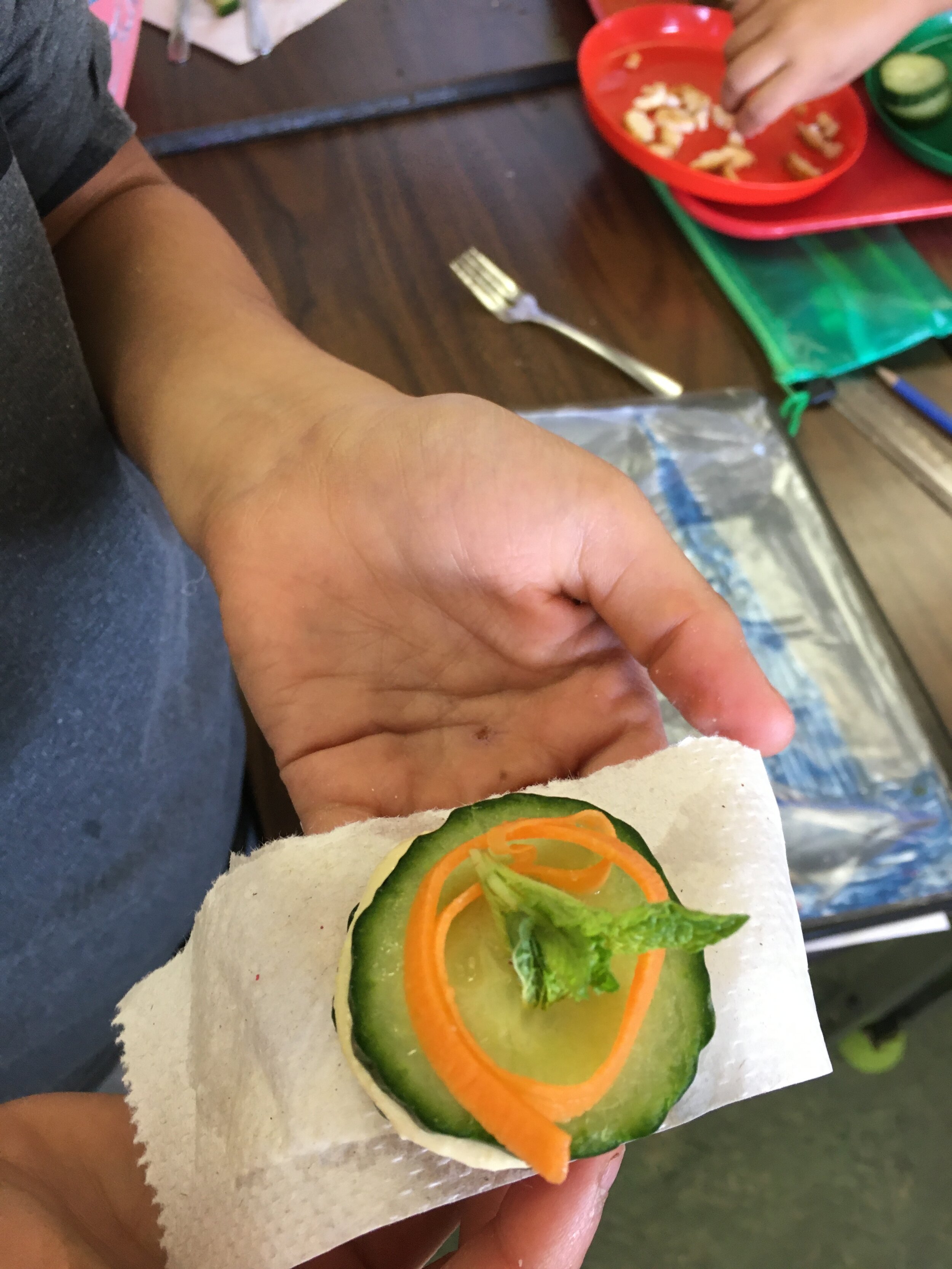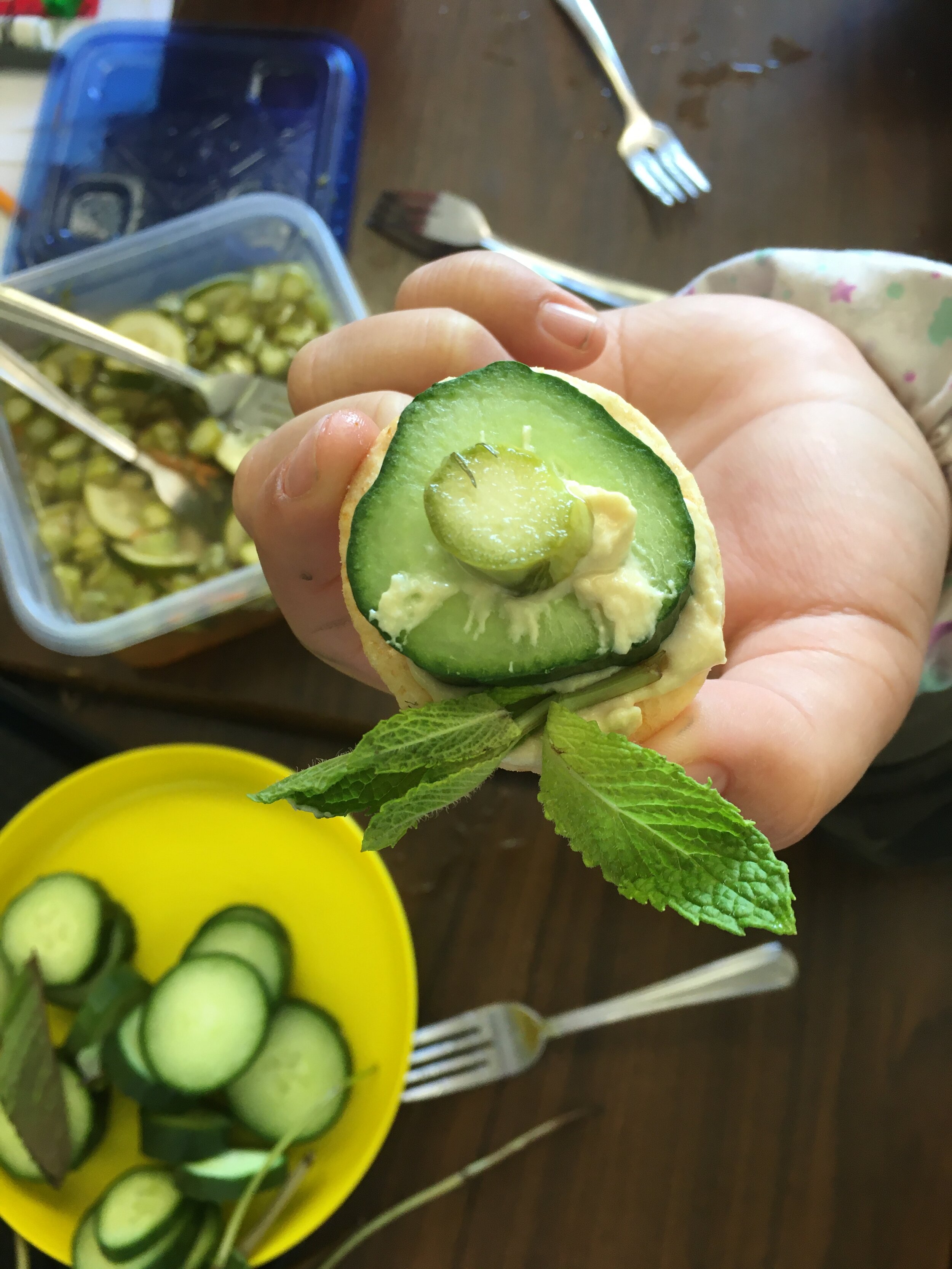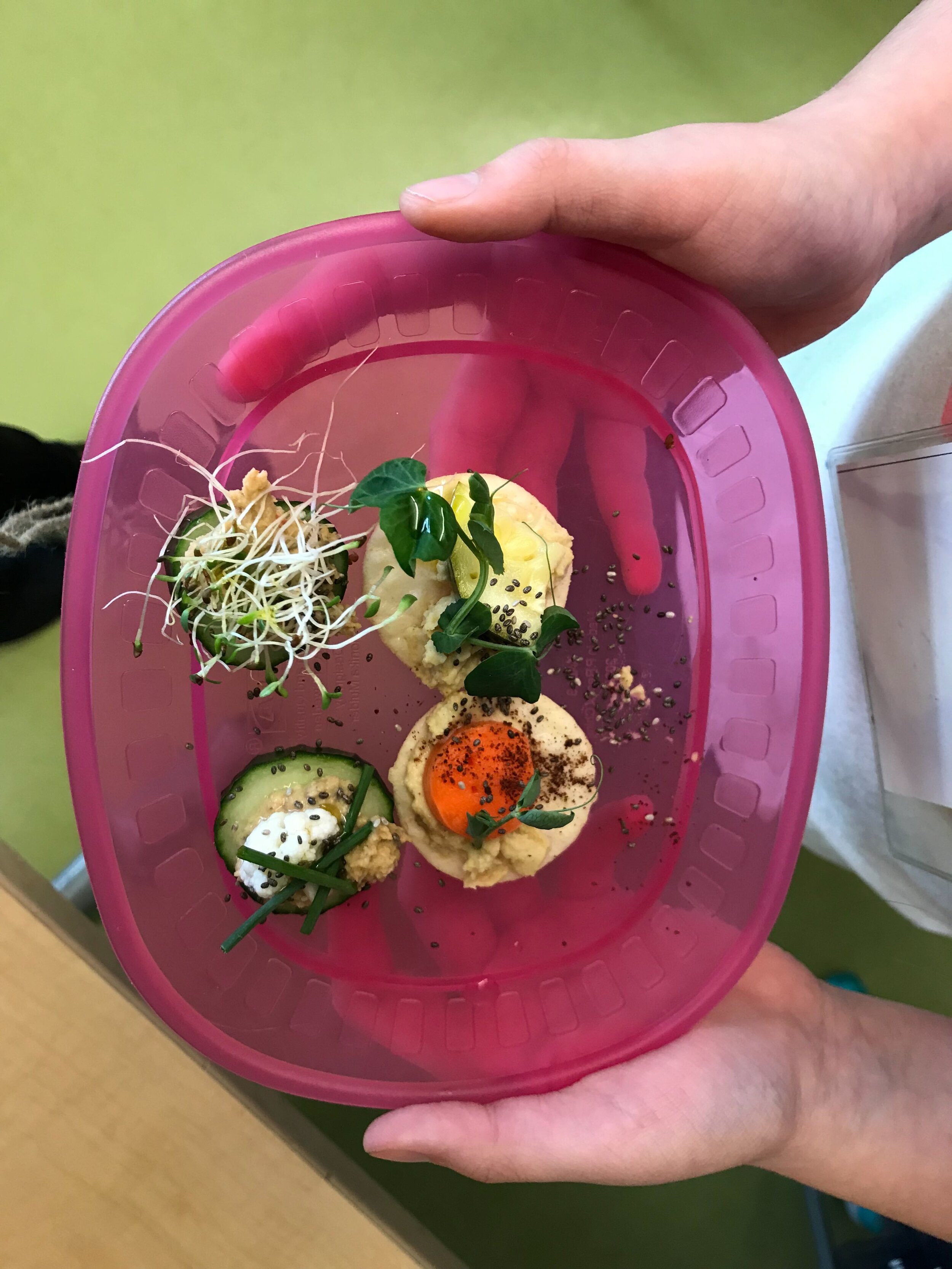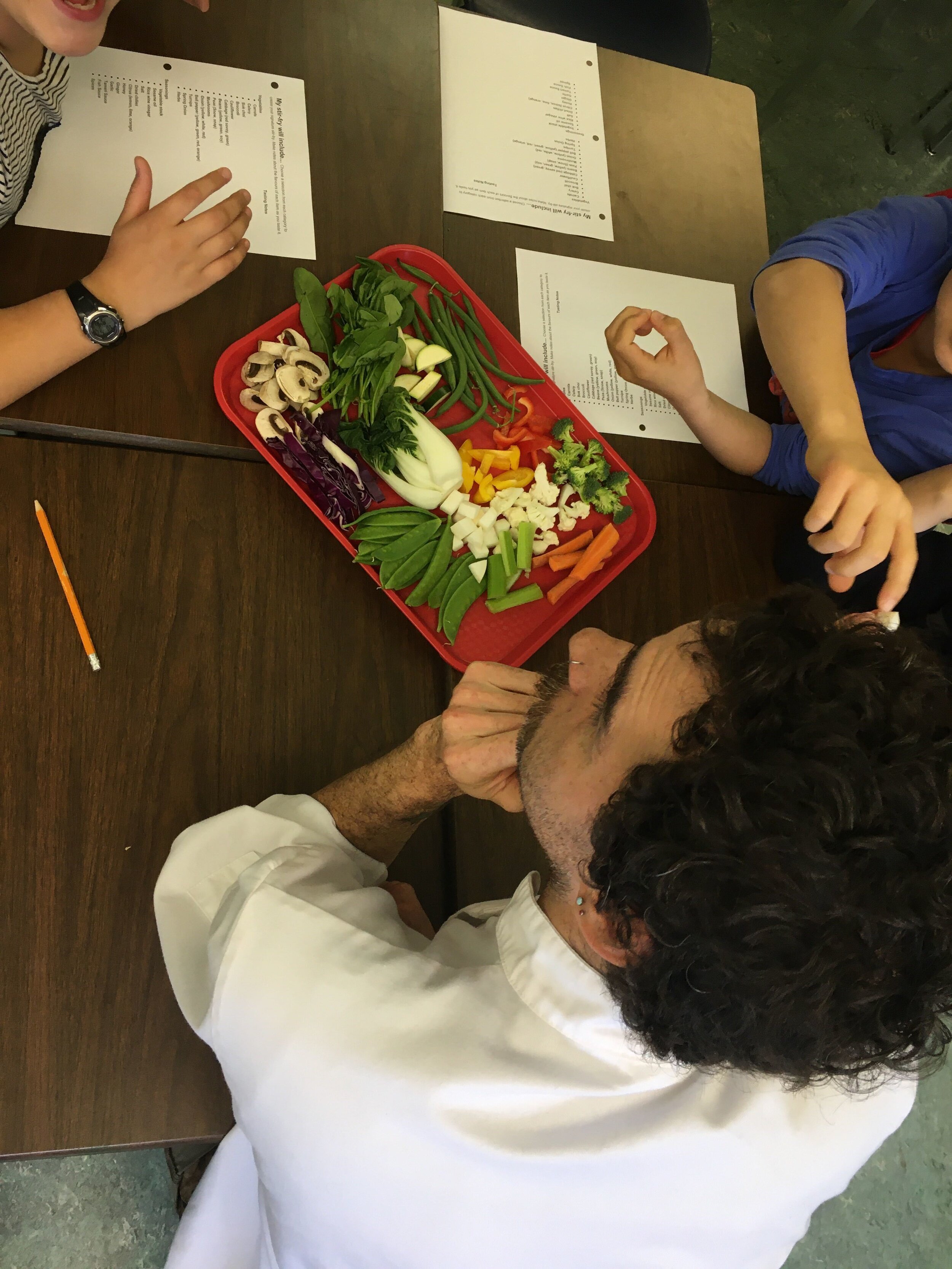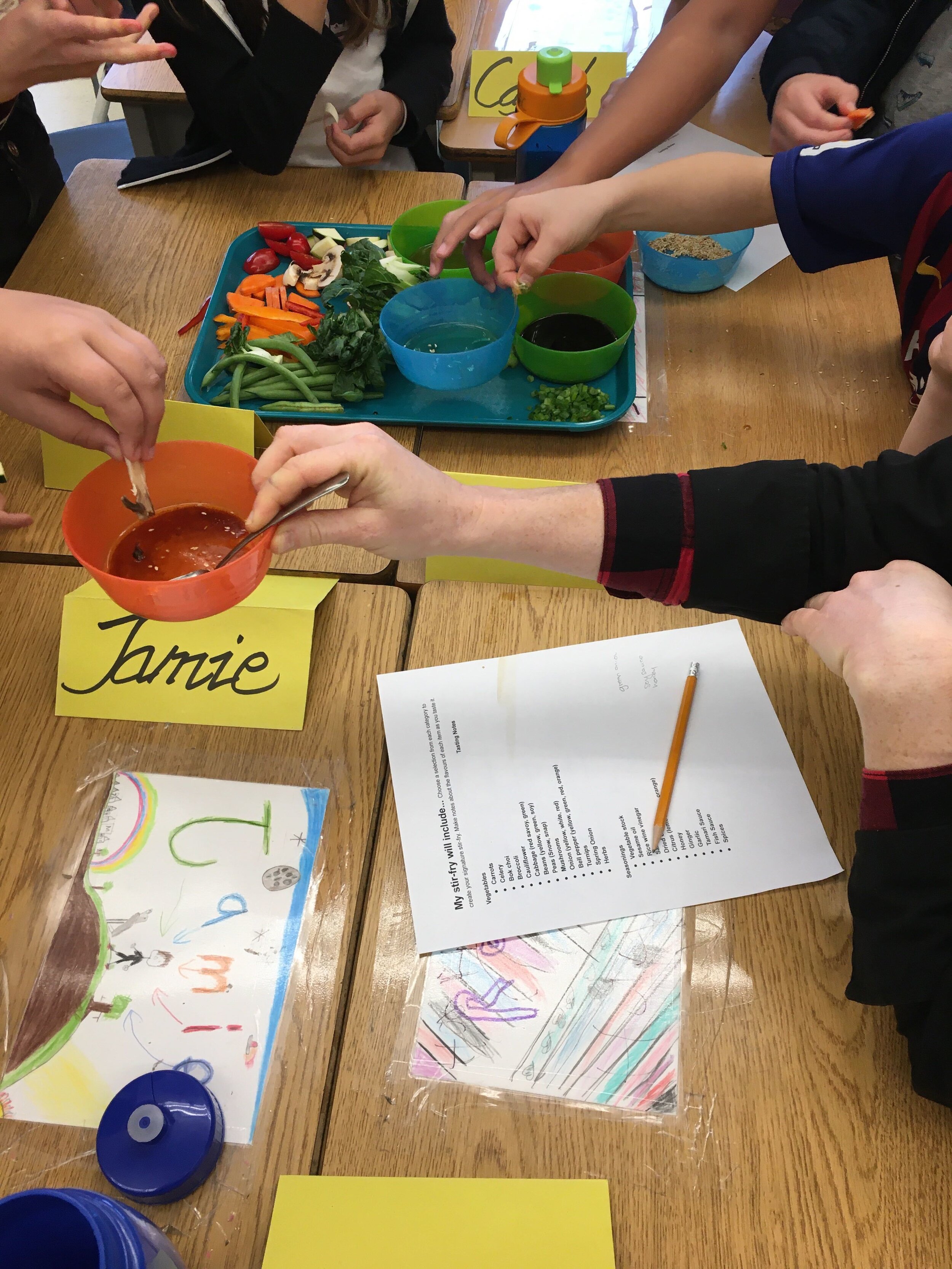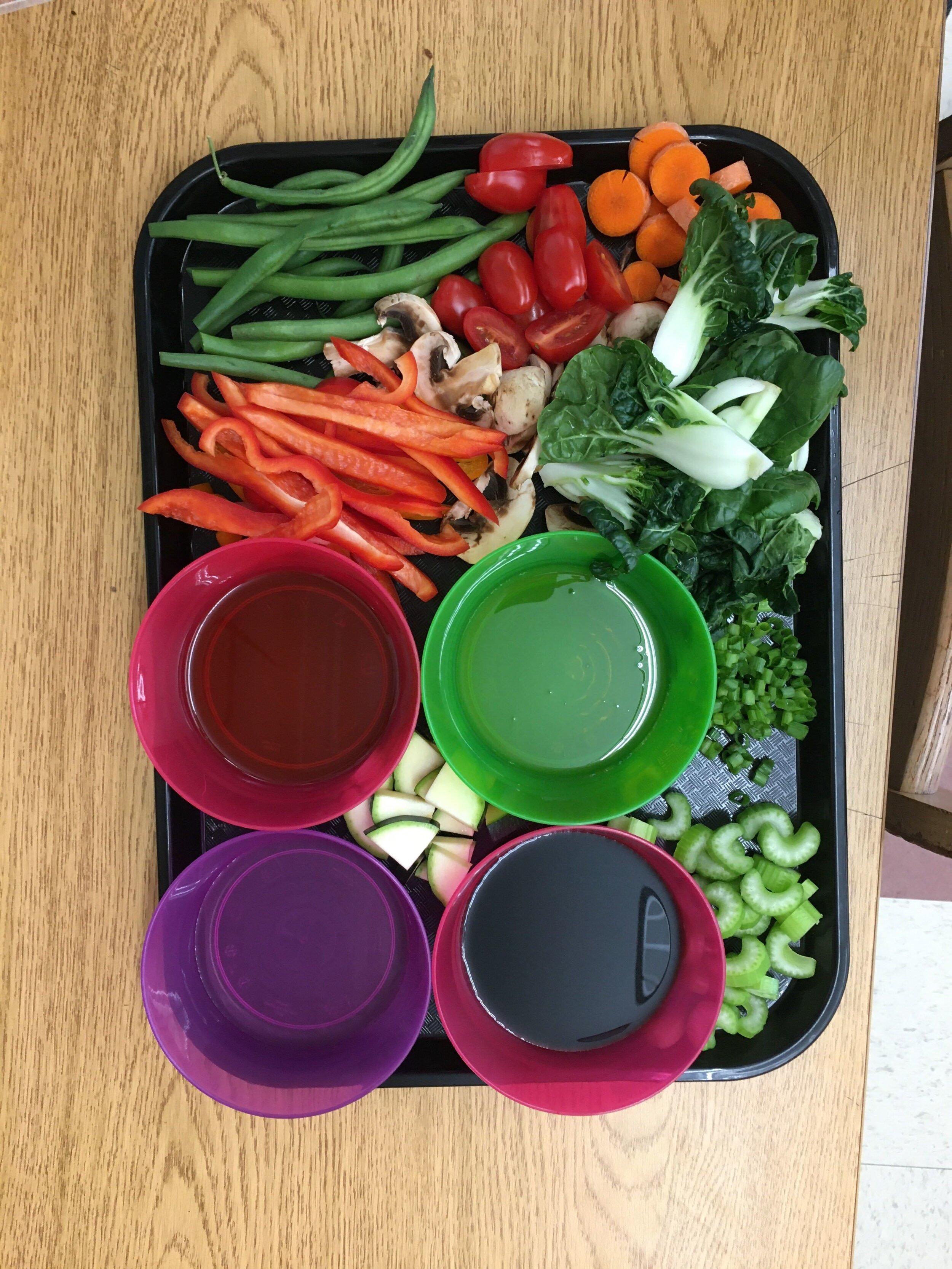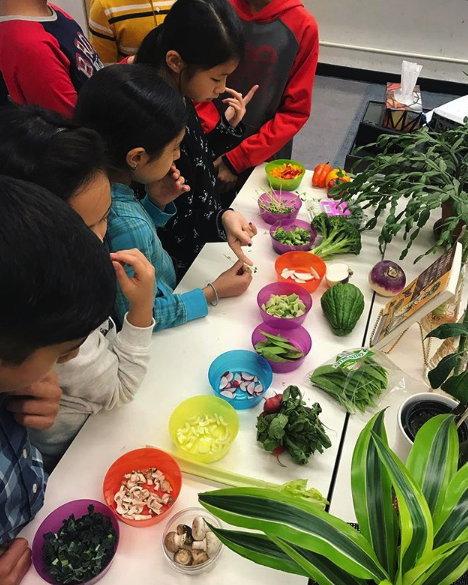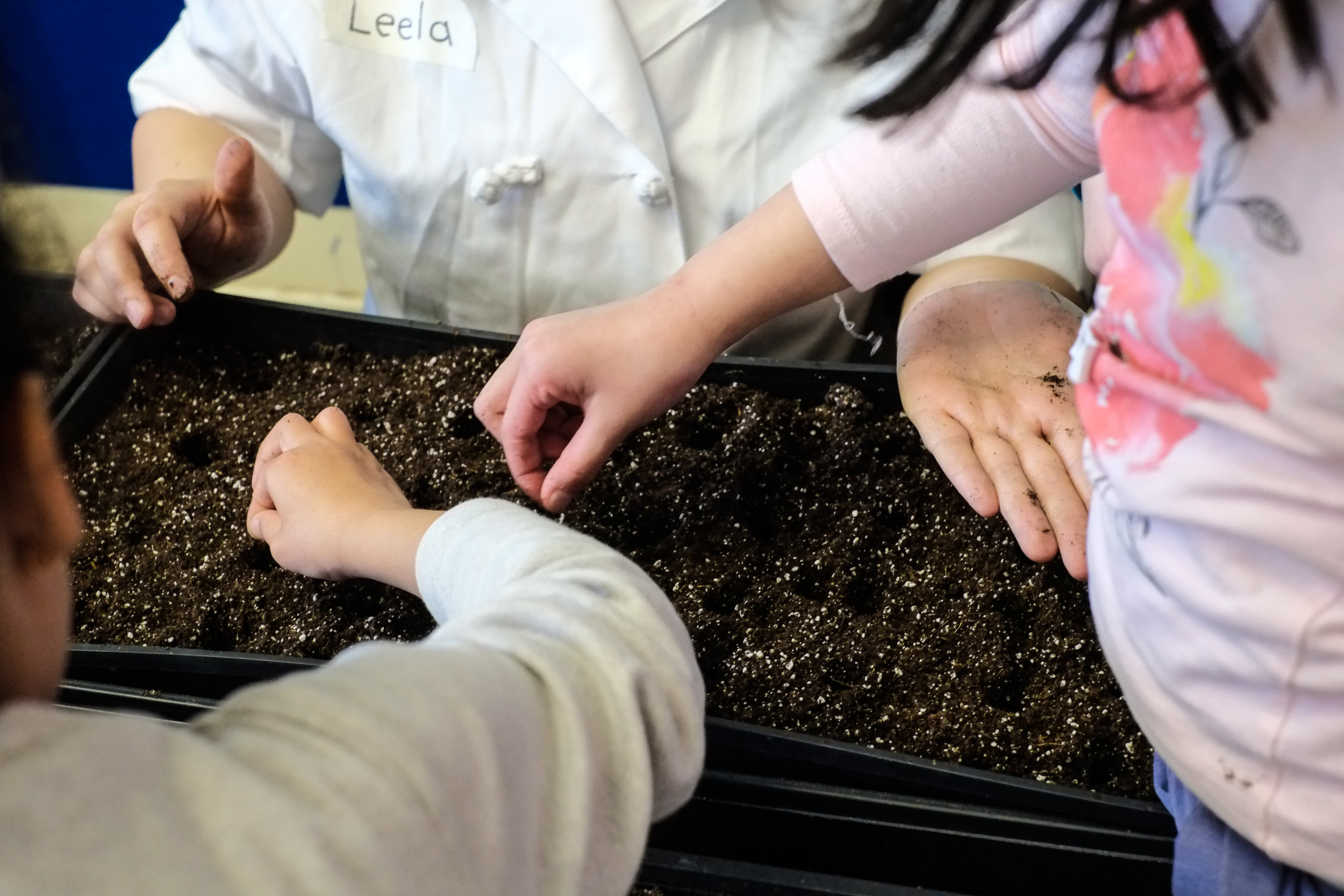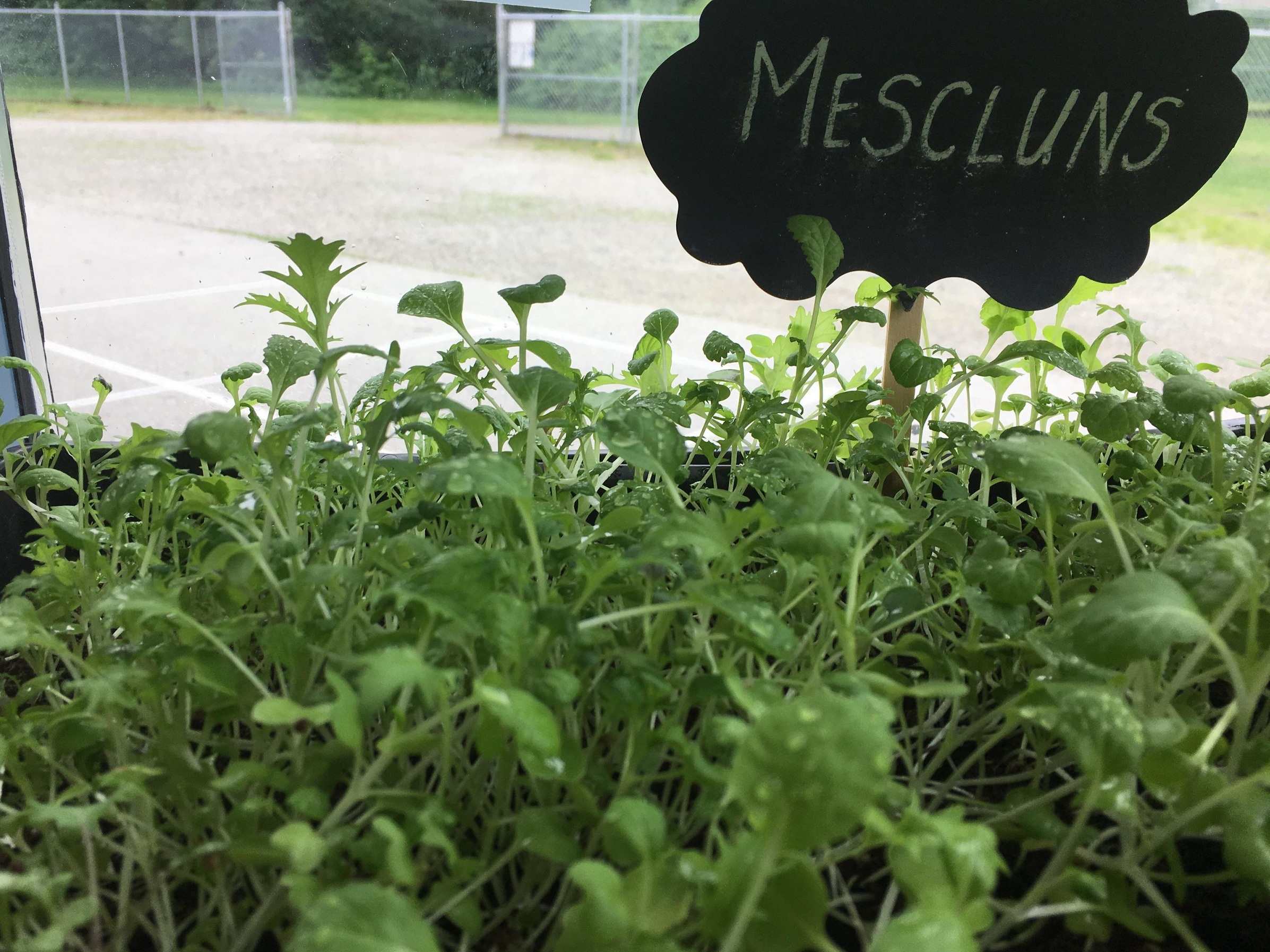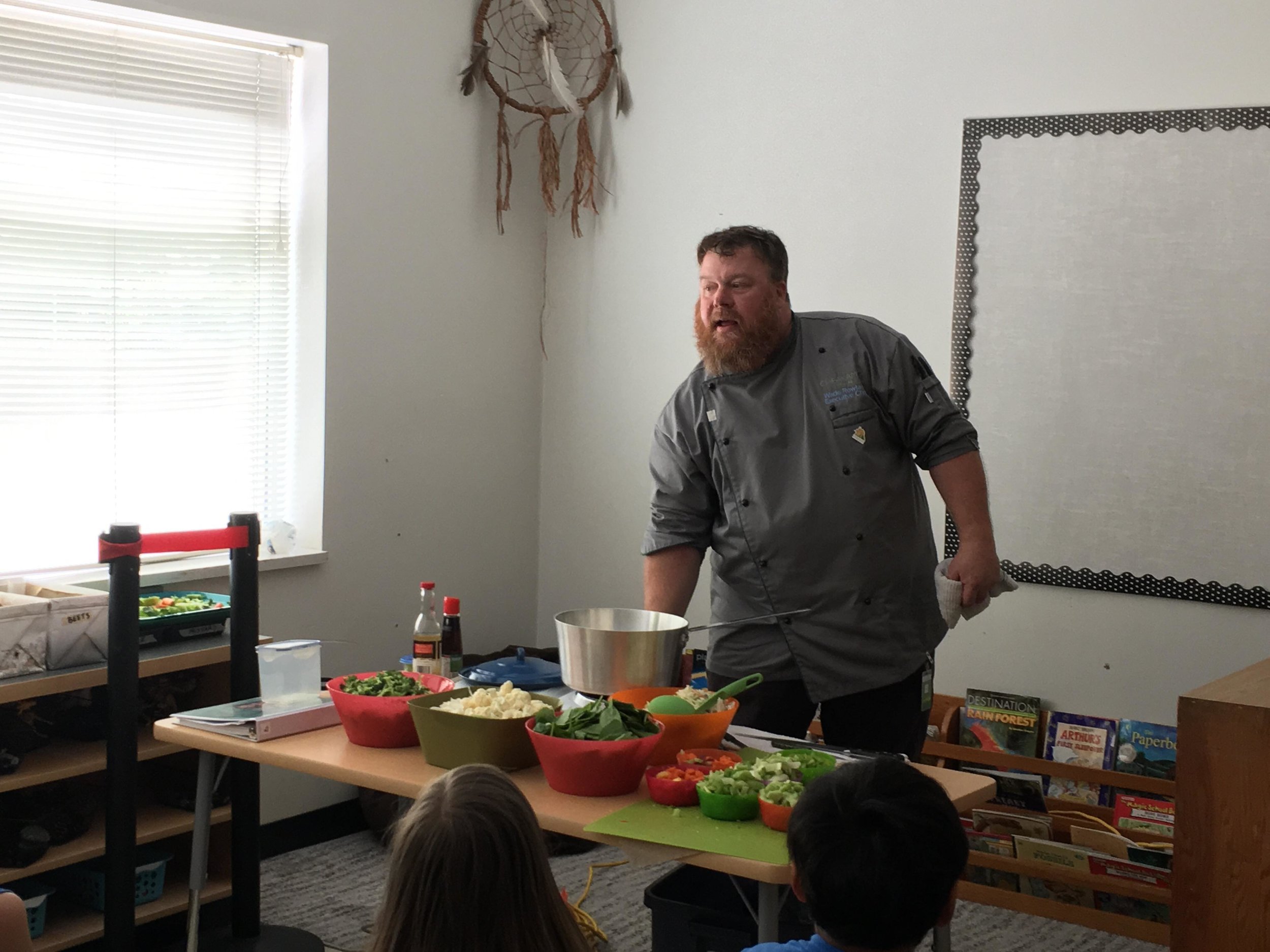These Greensicles get their vibrant green color from spinach. Including spinach in a popsicle (or smoothie) adds vitamins A and C as well as potassium and magnesium. Making this easy recipe along with kids is fun and will help get them comfortable cooking with and eating greens. For extra fun make up your own name for the greensicles (hulksicles, grasshoppersicles, greenmonstersicles).
Frozen Greensicles Recipe
Yield: This recipe makes 4 greensicles
Prep time: 5 minutes
Freeze time: 5 hours (or a bit longer depending on your freezer)
Ingredients:
½ cup spinach or other greens
½ cup pineapple (frozen, canned or fresh)
½ cup milk (dairy or dairy free)
½ cup yogurt (dairy or dairy free)
1 banana (frozen or fresh)
Tools:
Blender*
Popsicle molds**
Instructions:
Place all ingredients in a blender or food processor and blend mixture until it is smooth and creamy and there are no large chunks of spinach left. If your smoothie is too thick add some extra milk, yogurt or water and blend some more. Ask an adult to assist when working with a bender and food processor.
Pour mixture into popsicle molds
Freeze for 5 hours or until frozen
Release popsicles from the molds and enjoy
Modifications:
You can add any fruit you have on hand to your greensicle recipe. Some fruits like blueberries will taste great and also change the color of your greensicle. Have fun experimenting with different flavor and color combos.
*If you don’t have a blender you can use a food processor or put all the ingredients in a zipper bag and smush the mixture with your hands (chop the spinach a fine as possible if you are using this method).
**If you don't have popsicle molds you can freeze this mixture in an empty yogurt container and eat it with a spoon like ice cream or “icegreen”.


